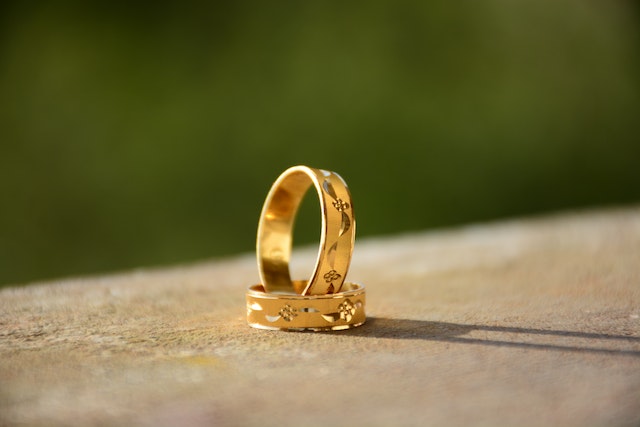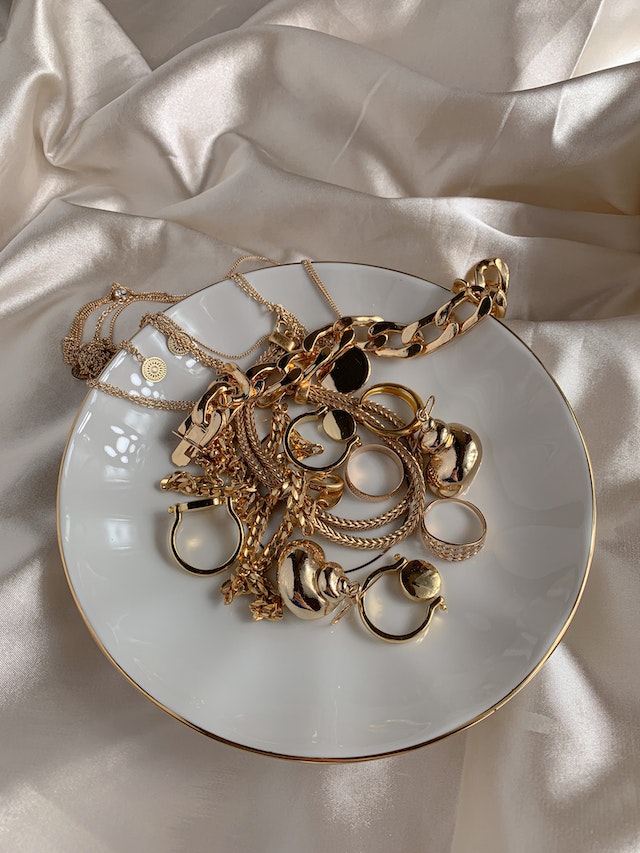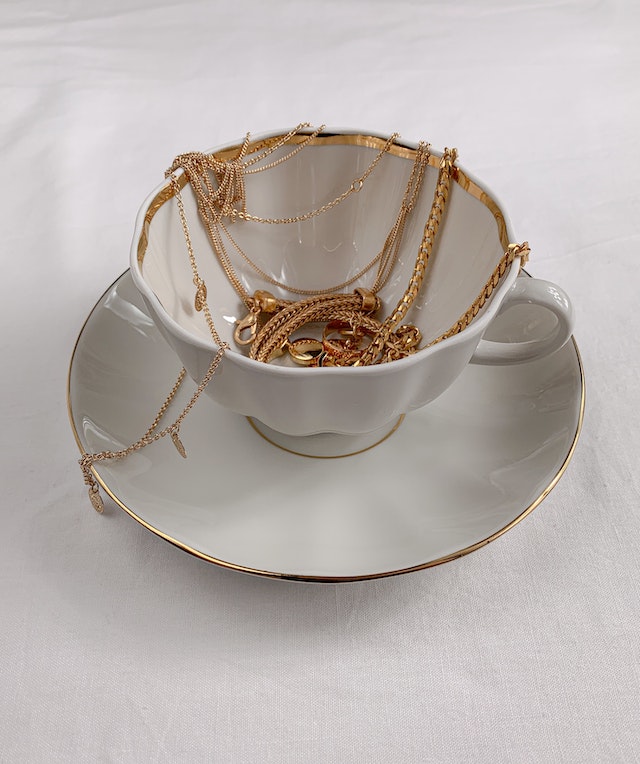Gold
Does real gold turn green? (Causes and prevention tips)
There are many people who can’t tell the difference between real and fake gold. This leads to a common dilemma: does real gold turn emerald green? Chemistry is the answer. It is a matter of chemistry.
You can tell if your jewelry has any of these characteristics if you notice them. You can’t buy jewelry that is made from 24K Gold. Instead, you will only find variations of the same metal with a certain percentage of alloy. There is a lower chance of your gold turning green the more Karats it has. Let’s see.
Table of Contents
Real Gold Turns Green, but is it Real?
24k Gold
Pure 24K Gold is the least reactive and biocompatible element. It does not react with other chemicals and never changes its color. This metal is hypoallergenic and does not affect the color of your skin.
It is not suitable for making jewelry. You should check your jewelry before you buy it. Different metals can change the color of the piece and leave traces.
You can tell that the jewelry you are wearing is fake if your skin becomes green or black after your first wear.
18K gold jewelry
Gold jewelry is always alloyed, but the question is what percentage? As an example, 18K vibrant yellow has 75% pure and 25% alloy – mainly nickel or copper.
These metals cause green discoloration under certain circumstances. Although the added metal can be minimal, it can cause discoloration of the skin.
14K gold jewelry
14K Gold Jewelry, unlike pure gold, will likely turn green over time. It contains 14 parts of pure gold and ten parts of alloys such as silver, palladium bronze, copper zinc, and nickel. These metals will oxidize when in contact with the air, causing skin discoloration.
Ask about the alloys of jewelry, as nickel is the metal that leaves traces most quickly on the skin. This is especially true when it comes to soap and detergent chemicals.
After a few months, copper added to gold jewelry can leave greenish marks on your skin.
Why Gold Turns Yellow?
Gold discoloration can be caused by a number of factors that cause the orangish-yellow color to change into another shade.
Metallic Abrasion
The hard metals in your make-up may cause discoloration of gold over time. Cosmetics that contain metals stronger than gold will separate when they come into contact with the precious metal.
The dark powdery substance that is created by the chemical reaction will be absorbed into your skin. You will see dark spots where the jewelry has come into contact with the skin.
Oxidation
Gold is a non-corrosive metal. Gold is not suitable for jewelry because it is too soft. Jewelers, therefore, mix pure gold with alloys to make jewelry.
In most cases, your jewelry also contains silver, nickel, or copper. All of these metals oxidize naturally and turn dark when exposed for a prolonged period to oxygen. This process is accelerated by sweat and heat, which will result in the jewelry changing its original color.
Corrosion
You should remove your jewelry if you like to swim in the pool. The water in pools contains high amounts of chlorine, which is corrosive and can discolor gold. You will see a darkening of your skin as a result. The majority of household cleaners will have the same result.
Low-Quality Plates
If you choose less expensive jewelry that has a rhodium-plated surface, this porous layer will change over time. It is usually between 0.25 and 0.5 microns thick. Different particles can then sift through the gold and rhodium and cause color changes.
This problem can be solved by re-plating gold jewelry, or by adding $100 to plated jewelry that has a layer of platinum.
gold-plated jewelry will also have this problem, especially if the gold coating is very thin. Over time, the base metal will appear on top of the gold-plated jewelry after the gold coating has disappeared.
Why gold turns the skin green
Anemia
The pH of your skin is affected by the iron levels in your system. You may notice that skin with a higher pH is more prone to discoloration.
Contact Dermatitis
Alloy abrasion is often the cause of this condition. Gold is also a common allergy, and dermatitis is one of its symptoms.
This is most common on your finger if you are not in the habit of removing your ring when taking a bath or using chemicals.
Sulfur
The production of sulfur-containing amino acids is increased by hormonal changes, and certain medications such as antibiotics, and chemotherapy.
These products react immediately with metals, such as copper and nickel. They often leave green marks on the skin of patients. Sulfur-based shampoos and creams have the same reaction.
Copper
Copper from gold jewelry can oxidize if you have an acidic complexion. You may notice dark green marks on your skin when you sweat a lot. This is where the jewelry comes into contact with your skin.
Nickel
Nickel-containing gold jewelry can cause skin discoloration. Nickel is the base metal used in low-quality jewelry and gold-plated items. The nickel base will be visible once the gold plating wears off and cause discoloration of the skin.
How to Prevent Gold Jewelry from Discoloration
You can prevent your gold jewelry from turning green. Do your best, especially if alloys are a problem for you.
- Buy gold jewelry without copper or nickel alloys
- If you already own a gold piece with a certain amount of nickel or copper, it is best to save it for special events and not wear it every day.
- Protect your jewelry from tarnishing by choosing rhodium-plated pieces
- Use clear nail polish on the inside of the ring to create a barrier to protect your skin from the metal.
- Keep jewelry clean, and remove dirt regularly to prevent oxidation.
- Wear jewelry only on dry skin. Remove it when you bathe, wash your hands, or swim.
- Remove your jewelry before entering the pool to avoid a chemical reaction between copper alloy and chlorine in the water.
- Wearing jewelry that is easily tarnished on hot days will cause green discoloration due to intense perspiration
- Remove jewelry before using cleaners, especially those that contain bleach
- Apply perfume or lotion before wearing jewelry
Even though dark greenish traces of skin on your body are unsightly, they are harmless and rarely permanent. These spots can be removed by washing your hands with soap.
You may need to use baking soda and lemon juice to remove persistent discoloration.
Mixing hot water with one cup of vinegar and one teaspoon of salt is the best solution for gold jewelry that contains a large amount of copper. You can then use a cotton towel soaked in the liquid to remove green discoloration on your skin.
How to Prevent Skin Discoloration
Gold Quality
If you want to prevent your jewelry from leaving ugly colored traces, it is best to buy high-quality pieces of gold.
Although 14K or even 12K gold jewelry is beautiful, it contains a large amount of alloy which causes the jewelry to tarnish and discolor skin over time.
Gold Type
Yellow gold is a quality metal that will not tarnish easily, and therefore it won’t cause green marks to appear on your skin. Rose gold, on the other hand, contains alloys that turn green more frequently.
white-gold jewelry will not discolor your skin thanks to the rhodium coating. The rhodium coating will eventually wear off, causing your jewelry to tarnish and leave dark spots on your body.
You can also buy platinum jewelry. This material is expensive, but it never tarnishes. If you are looking for something unique, titanium jewelry is the way to go. You can be sure that it won’t stain your skin.
Alloy Type
You can save money by buying a piece of jewelry made from a lower-grade gold alloyed with the correct type.
If you see greenish or blackish marks on the finger you should have it checked. You can then avoid buying the same piece of jewelry again by having it checked.
You can read more about it here:
Gold jewelry of high quality won’t leave any green marks on the skin. Wearing jewelry with higher gold content will reduce the chances of experiencing this problem. Alloys added to jewelry can react with skin acidity or chemicals, changing the color over time.








